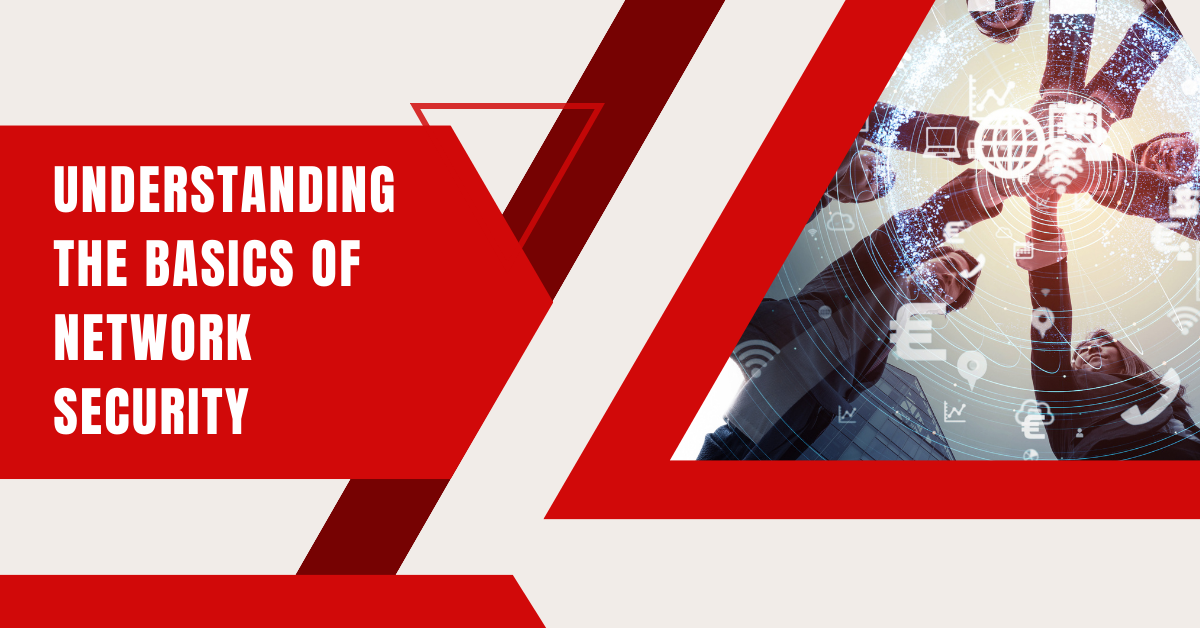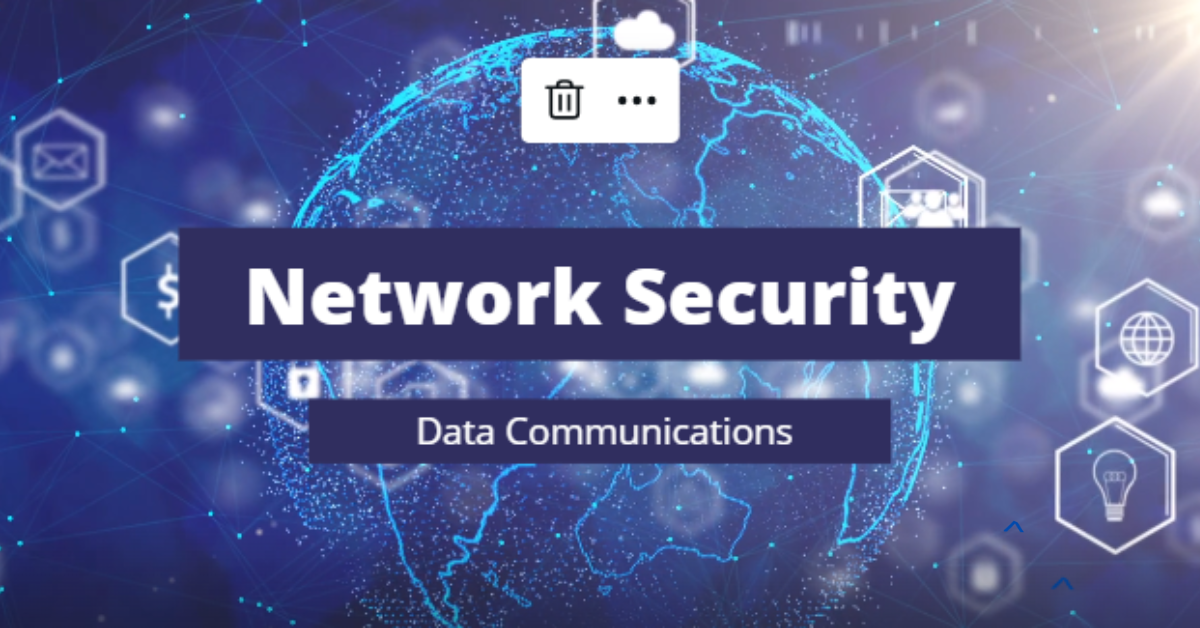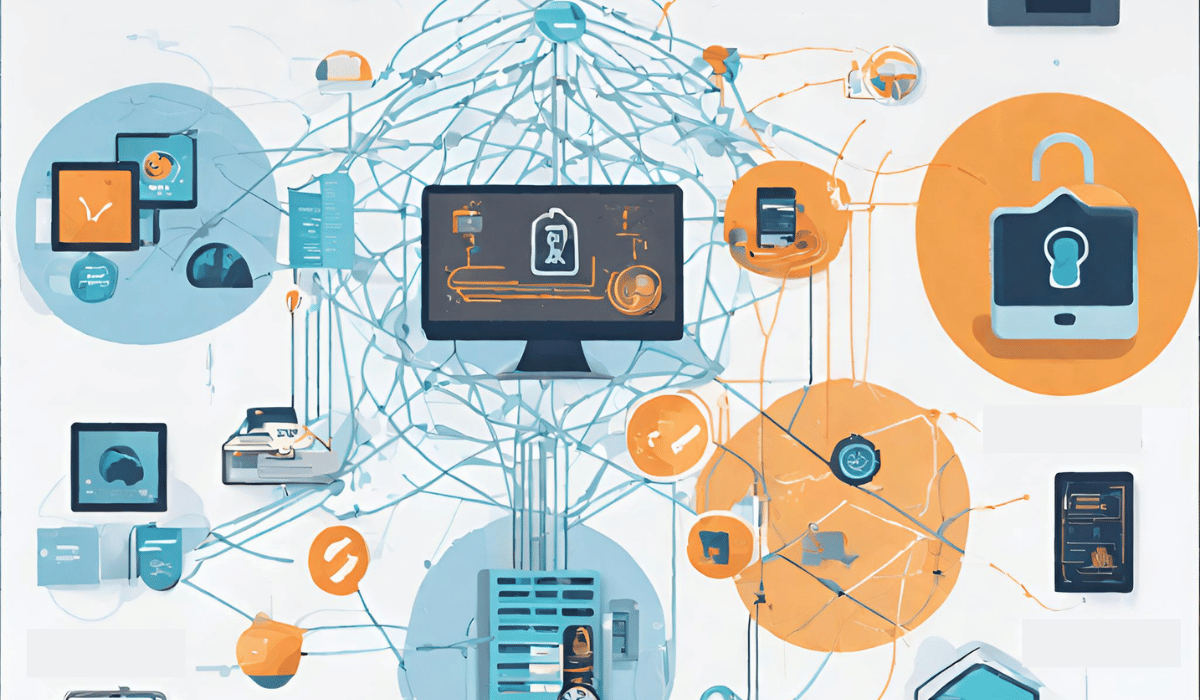Yes, network security is a crucial component of data communications. It ensures the safe transmission of data across networks, protects sensitive information from unauthorized access, and defends against external threats and cyberattacks. Proper network security practices are vital for maintaining the integrity and confidentiality of communicated data.
Network security plays a crucial character in the realm of data communications. In today’s interconnected world, where information is constantly being transmitted and received, it is imperative to understand and implement effective measures to safeguard networks and their data. This article will explore network security fundamentals, its importance in data communications, its role in ensuring data integrity and protecting confidential information, the intersection between network security and data communications, case studies of network security implementations, and future trends.
Understanding the Basics of Network Security

Before delving into the intricacies of network security, it is essential to define what it entails. Network security denotes the measures taken to guard a network from unauthorized access, misuse, modification, or disruption. These measures aim to maintain the confidentiality, integrity, and availability of the network and its assets.
The importance of network security cannot be excessive, as it forms the foundation for secure data communications. Understanding and implementing robust network security measures are paramount with the exponential growth in data exchange and the emergence of sophisticated cyber threats.
Defining Network Security
Network security encompasses various components, including hardware, software, policies, and procedures. It involves implementing mechanisms to detect, prevent, and respond to potential threats. These mechanisms can include firewalls, intrusion detection systems, virtual private networks (VPNs), access controls, and encryption.
Firewalls are a crucial component of network security. They act as a barrier between a trusted inner network and an untrusted external network, filtering incoming and departing network traffic based on predetermined security rules. Intrusion detection systems (IDS) are designed to sense and reply to unauthorized access attempts or malicious actions within a network. They monitor network traffic, analyze patterns, and raise alerts when suspicious behavior is detected.
Virtual private networks (VPNs) provide secure remote access to a network over the Internet. They establish an encrypted tunnel between the user’s device and the network, ensuring that sensitive data remains protected during transmission. Access controls, such as passwords, biometric verification, and multi-factor authentication, are used to verify workers’ identities and determine their level of access to network resources.
Encryption plays a vital role in network security by converting data into an unreadable format, making it unintelligible to unauthorized individuals. It ensures the confidentiality and integrity of data by protecting it from interception and tampering.
Importance of Network Security
The importance of network security lies in its ability to protect data confidentiality, integrity, and availability. Confidentiality ensures that only authorized individuals have access to sensitive information. Data integrity guarantees that information remains accurate and unaltered during transmission. Availability ensures that data and services are accessible when needed.
By implementing effective network security measures, organizations can prevent unauthorized access to sensitive information, mitigate the risk of data breaches, and safeguard their reputation. Network security helps organizations comply with rules and standards, such as the General Data Protection Regulation (GDPR) and the Payment Card Industry Data Security Standard (PCI DSS).
Moreover, network security plays a critical role in maintaining business continuity. Downtime caused by network breaches or attacks can result in financial losses, damage to customer trust, and disruption of operations. Robust network security measures, such as regular security audits, vulnerability assessments, and incident response plans, help organizations identify and address potential vulnerabilities before they are exploited.
Furthermore, network security is essential for protecting intellectual property and trade secrets. In today’s highly competitive business landscape, organizations invest significant properties in research and development to gain a competitive edge. Without adequate network security measures, valuable intellectual property can be stolen or compromised, leading to significant financial and reputational damage.
Additionally, network security is crucial for organizations that rely on cloud computing and remote work. As more businesses adopt cloud-based services and enable remote access for employees, the need for robust network security becomes even more critical. Cloud security measures, such as data encryption, access controls, and regular backups, are essential for protecting sensitive data stored in the cloud.
In conclusion, network security is a multifaceted discipline that involves various components, mechanisms, and practices to protect networks from unauthorized access and potential fears. Its importance cannot be overstated, as it ensures data and services’ confidentiality, integrity, and availability. By implementing robust network security measures, organizations can mitigate the danger of data breaches, comply with regulations, maintain business continuity, protect intellectual property, and enable secure cloud computing and remote work.
The Role of Network Security in Data Communications
Network security is crucial in ensuring smooth and secure data transmission. It encompasses various measures and protocols that protect data integrity and safeguard confidential information.
Ensuring Data Integrity
One of the fundamental roles of network security in data communications is ensuring data integrity. Data integrity encompasses data accuracy, consistency, and trustworthiness throughout its lifecycle.
Network security measures, such as encryption and digital signatures, help verify the integrity of data during transmission. These measures ensure that data remains untampered with and free from unauthorized modifications.
For example, encryption algorithms convert data into an unreadable format, making it difficult for unauthorized entities to decipher the information. Digital signatures, on the other hand, provide a unique identifier that verifies the validity of the data and detects any tampering attempts.
Protecting Confidential Information
Alongside data integrity, protecting confidential information is another critical aspect of network security in data communications. Confidential information can include personal data, trade secrets, financial records, and intellectual property.
Network security measures, such as access controls, secure communication protocols, and data encryption, safeguard confidential information from unauthorized access and interception. These measures assure organizations and individuals that their sensitive data remains secure.
Access controls ensure that only approved individuals have the necessary permissions to access confidential information. This can be achieved through user authentication mechanisms, such as passwords, biometrics, or two-factor authentication.
Secure statement protocols, such as Secure Sockets Layer (SSL) and Transport Layer Security (TLS), establish encrypted connections between devices, protecting the confidentiality of data in transit. These protocols prevent eavesdropping and ensure that sensitive information remains private.
Data encryption is another essential aspect of protecting confidential information. Encryption adds an extra layer of security by converting data into an illegible format, making it extremely difficult for unauthorized parties to access and understand the information.
In conclusion, network security is vital in data communications as it ensures data integrity and protects confidential information. Through various measures like encryption, digital signatures, access controls, and secure communication protocols, network security provides a robust framework for the secure transmission of data.
The Intersection of Network Security and Data Communications

Network security and data communications intersection is a dynamic landscape that requires ongoing attention and adaptation.
Network security plays a crucial role in supporting data communications by establishing a secure environment for the exchange of information. Whether it is a local area network (LAN), a wide area network (WAN), or the Internet, network security measures ensure that data is protected during transit.
One of the key ways network security supports data communications is by implementing secure communication protocols. These protocols, such as Secure Sockets Layer (SSL) and Transport Layer Security (TLS), establish encrypted connections between communicating parties. This encryption ensures that data transmitted over the network cannot be intercepted or accessed by unauthorized individuals.
In addition to secure communication protocols, virtual private networks (VPNs) are another important tool in network security. VPNs create secure and private connections over public networks, allowing users to access resources and exchange data in a protected manner. By encrypting data and routing it through secure tunnels, VPNs ensure that sensitive information remains confidential and secure.
Encryption mechanisms also play a significant role in supporting data communications. Encryption converts plain text into ciphertext, making it unreadable to anyone without the decryption key. By encrypting data before transmission, organizations can ensure that it remains unintelligible to unauthorized individuals even if it is intercepted.
Despite the benefits and advancements in network security, challenges persist at the intersection of network security and data communications. Cybercriminals continually evolve tactics, employing sophisticated methods to exploit network vulnerabilities and compromise data communications.
Organizations must stay vigilant and keep up with emerging threats to protect their networks and data effectively. This necessitates implementing robust security measures like firewalls, intrusion detection systems, and regular security audits. Additionally, organizations must educate their employees about best practices for network security and data communications to stop social engineering attacks and other forms of human error.
Furthermore, the increasing complexity and interconnectedness of modern networks pose additional challenges. With the rise of the Internet of Things (IoT), more devices are connected to networks than ever. Each of these devices signifies a potential entry point for cyber attackers. Organizations must carefully manage and secure these devices to prevent illegal access and potential data breaches.
In conclusion, the intersection of network security and data communications is a critical area that demands constant attention and adaptation. By implementing robust security measures, staying informed about emerging threats, and educating employees about best practices, organizations can effectively protect their networks and ensure the secure exchange of information.
Case Studies of Network Security in Data Communications
Examining real-world case studies provides valuable insights into implementing network security measures in data communications.
Successful Implementations of Network Security

Several organizations have successfully implemented network security measures to protect their data communications. These implementations involve a combination of technical solutions, policies, and employee awareness.
For example, a multinational financial institution implemented multi-factor authentication, encrypted communication channels, and regular security audits to secure its global network infrastructure. This comprehensive approach significantly reduced the risk of data breaches and financial fraud.
Lessons from Network Security Failures
Network security failures are valuable lessons for organizations seeking to enhance their data communications’ security posture.
A high-profile data breach at a healthcare organization exposed millions of patient’s personal and medical information. The breach occurred due to outdated network security protocols, inadequate employee training, and insufficient monitoring. This incident underscores the need for regular security assessments, ongoing training programs, and robust monitoring mechanisms.
Future Trends in Network Security and Data Communications
The development of technology and the ever-changing threat land necessitate anticipating future trends in network security and data communications.
Emerging Technologies in Network Security
Emerging skills, such as artificial intelligence (AI), machine learning (ML), and blockchain, are poised to shape the future of network security and data communications.
AI and ML algorithms can detect patterns and anomalies in network traffic, enabling faster and more accurate threat detection. With its decentralized and immutable nature, blockchain technology holds promise for enhancing data integrity and strengthening trust in data communications.
The Future of Data Communications: Opportunities and Threats
The future of data communications presents both opportunities and threats. The proliferation of Internet of Things (IoT) devices and the increasing reliance on cloud computing introduce new vulnerabilities.
Organizations must embrace secure development practices, implement robust authentication and authorization mechanisms for IoT devices, and adopt a holistic approach to cloud security. These measures will mitigate the risks and seize the opportunities presented by the future of data communications.
Key Takeaways
- Data communications involve transmitting data between devices.
- Network security ensures the confidentiality, integrity, and availability of transmitted data.
- Threats like eavesdropping, man-in-the-middle attacks, and DDoS are challenges to data communications.
- Encryption and authentication are critical components of network security.
- Regularly updating and patching systems is essential for robust network security.
FAQs
Q: What is the main goal of network security in data communications?
A: To ensure transmitted data’s confidentiality, integrity, and availability.
Q: Why is encryption important in data communications?
A: Encryption scrambles data into a code to prevent unauthorized access during transmission.
Q: What is a man-in-the-middle attack?
A: An attack where a malicious actor intercepts communication between two parties to steal or manipulate data.
Q: Can outdated systems compromise network security?
A: Yes, outdated systems can have vulnerabilities that can be exploited, compromising data communications.
Q: Are firewalls part of network security?
A: Yes, firewalls are devices or software that filter incoming and outgoing traffic to protect a network.
Conclusion
In conclusion, network security is undeniably a pivotal part of data communications. Understanding the basics of network security, recognizing its importance, and comprehending its role in ensuring data integrity and protecting confidential information is essential for any individual or organization involved in data communications. Moreover, exploring the intersection between network security and data communications, learning from successful implementations and failures, and anticipating future trends enable stakeholders to stay ahead in this ever-evolving landscape. By prioritizing network security, we safeguard our data and foster secure and uninterrupted communication channels in an increasingly interconnected world.
